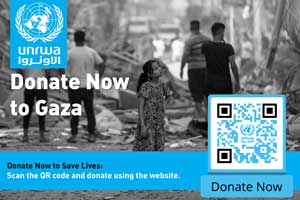You are here
The world cannot afford America’s health aid cuts. What comes next?
Feb 10,2025 - Last updated at Feb 10,2025
The global health decisions of the new US administration sent shockwaves worldwide, first with the withdrawal from the World Health Organisation (WHO), followed by the closure of USAID, and culminating in the freezing of US aid to countries.
The abrupt cessation of developmental and humanitarian assistance threatens the very programmes that many nations rely on to sustain their health systems and deliver critical relief.
This challenge becomes even more pressing amid the continued spread of infectious diseases and recurrent global health crises, such as the COVID-19 pandemic and Ebola outbreaks, which have reinforced the necessity of international collaboration in mounting effective responses and preserving global health security.
The suspension of US aid not only places vulnerable populations at heightened risk but also disrupts the broader mechanisms of global health and humanitarian support, with consequences that extend far beyond national borders.
Many developing nations depend heavily on US aid to sustain their health programmes. According to the Congressional Budget Office, the US has allocated approximately $278.1 billion in health sector support to low- and middle-income countries (LMICs) since 2000.
While this aid accounted for a mere 0.3% of total U.S. government spending in 2023, it represented a staggering 29.1% of all health-related development assistance from donor nations. Since 2020, these funds have been directed toward key global health priorities, including combating HIV/AIDS (47.8%), improving maternal and reproductive health (11.5%), advancing neonatal and child health (8.4%), and addressing malaria (5.9%) and tuberculosis. Studies indicate that U.S. investments have played a significant role in advancing disease control efforts and saving millions of lives in LMICs.
The abrupt cessation of this aid will leave these nations more vulnerable to disease outbreaks, weakening governments’ capacities to respond to health crises.
Historically, we know that diseases transcend borders, meaning the repercussions of this funding gap will not be confined to affected nations but will inevitably ripple outward, impacting other countries, including the US itself, and jeopardising global health security.
Let us also be reminded that US aid has extended beyond direct medical interventions to include strengthening health systems through research, workforce training and infrastructure development.
Without this support, these systems will falter, leading to a decline in healthcare quality and impeding progress toward universal health coverage. The most vulnerable communities, including refugees and other displaced populations, will bear the brunt of this deterioration, further exacerbating humanitarian crises in conflict zones and fragile settings.
US support for global health has not always been purely altruistic; it has also been driven by strategic considerations tied to national interests and health security. Containing disease outbreaks in developing nations serves as the first line of defense in preventing their spread to the rest of the world, including the United States.
Economic factors also play a role, as highlighted in reports from the US Department of Commerce, which have indicated that global health investments contribute to economic stability worldwide, benefiting the US economy in return.
By halting this support, the US will not only disrupt critical health initiatives funded through USAID and various non-governmental organisations, but also trigger widespread layoffs of healthcare professionals and programme staff, fuelling unemployment and deepening economic distress in aid-dependent nations. The ripple effects of such a decision will extend beyond health, potentially destabilising entire regions.
Given these significant health, social and economic challenges, developing nations must act swiftly to diversify their health financing sources and expand cooperation with alternative global powers such as the European Union, China and other regional and international entities. They must also advance sustainable economic policies that reduce dependency on foreign aid.
However, in practical terms, this is easier said than done. If self-sufficiency in health financing were a simple solution, many countries would have already achieved it. The reality is that only a handful of nations have successfully implemented such measures in a sustainable manner.
That said, there are notable success stories to learn from, particularly cases where regional cooperation among nations with shared historical, geographical and cultural ties has led to the establishment of specialised health bodies.
These collaborative frameworks have accelerated joint responses to health crises, fostered resource-sharing, and reduced excessive reliance on external aid. The Africa Centres for Disease Control and Prevention (Africa CDC) and the European Centre for Disease Prevention and Control (ECDC) serve as prime examples of how regional institutions can enhance health programs and bolster crisis preparedness and response through coordinated action.
Developing nations now face a monumental health, humanitarian and economic challenge, one that will undoubtedly have far-reaching consequences for global health security.
It is imperative to recognise the gravity of this threat and to act decisively in finding alternative solutions.
Strengthening international partnerships, mobilizing collective efforts, and upholding international legal frameworks, such as the International Health Regulations, must be prioritized.
The health sector in developing countries should be regarded not merely as a service-oriented sector but as a strategic investment requiring sustained attention.
The urgency to address this issue cannot be overstated. Immediate action is needed to avert devastating consequences that may prove difficult to reverse in the future.













Add new comment